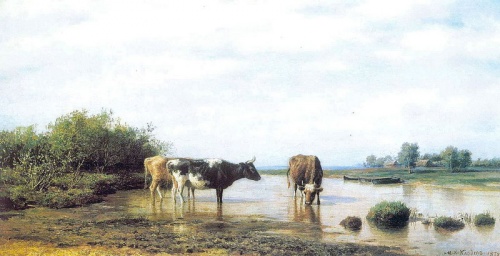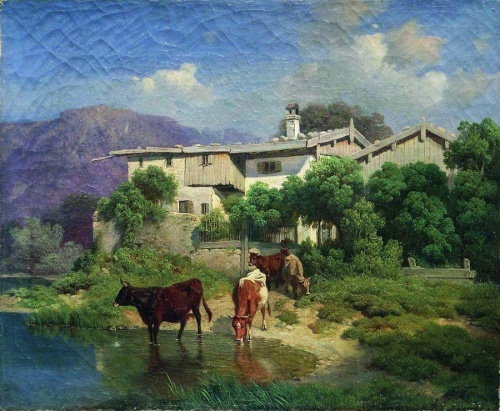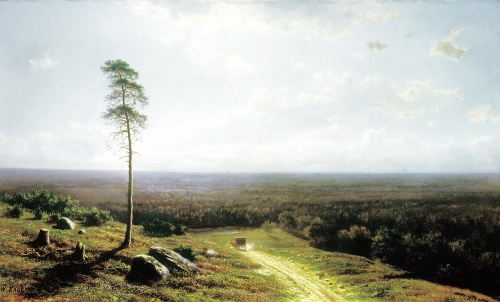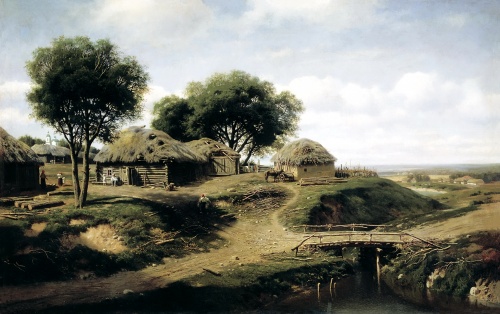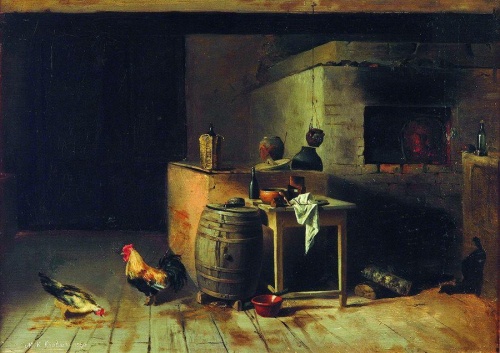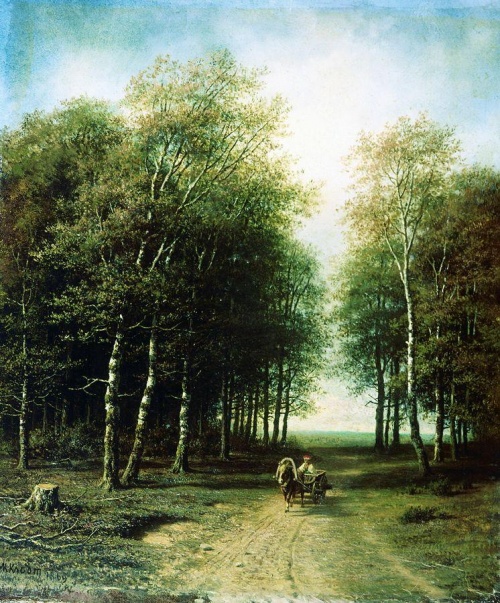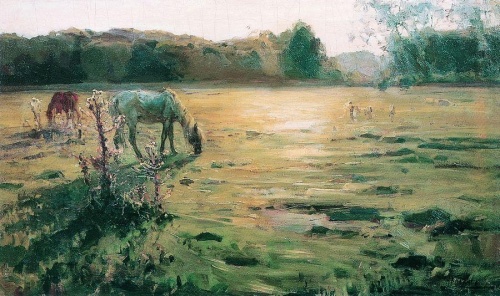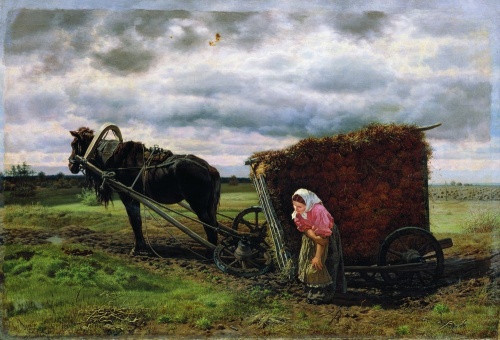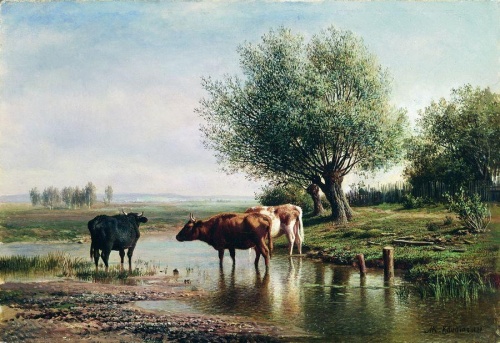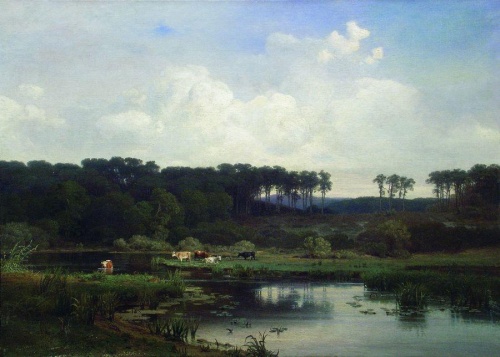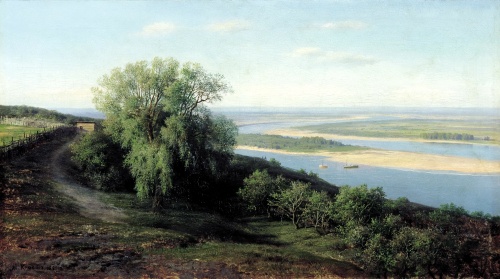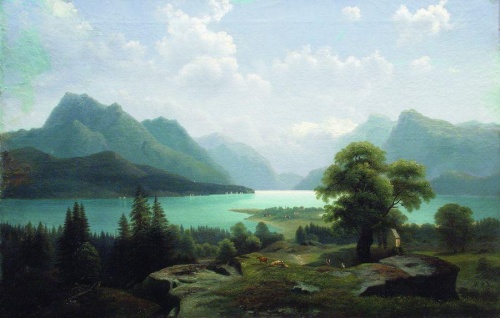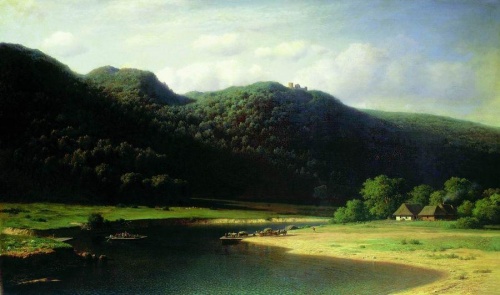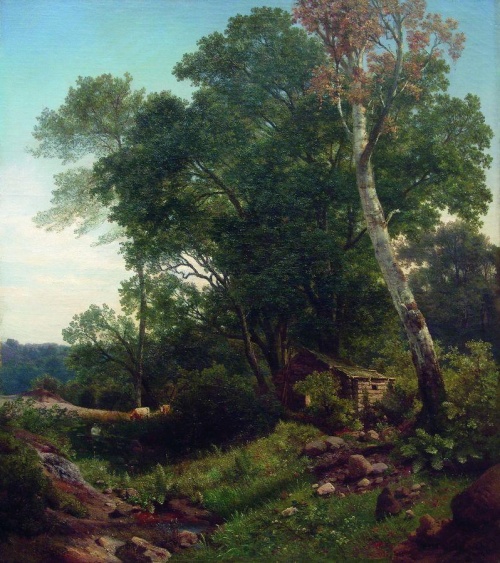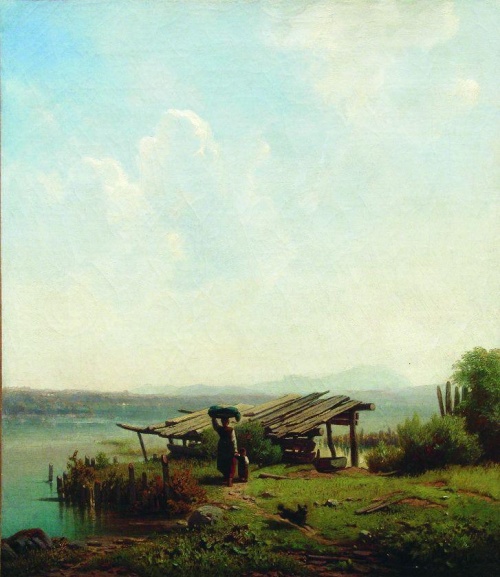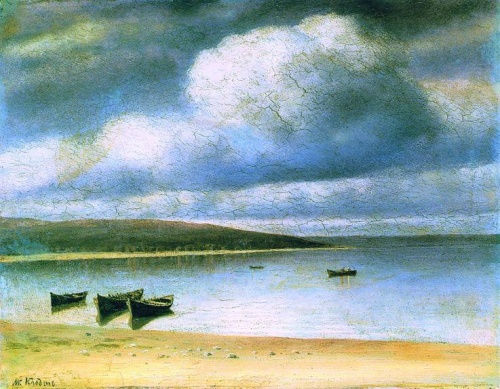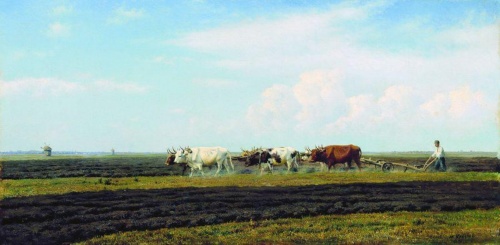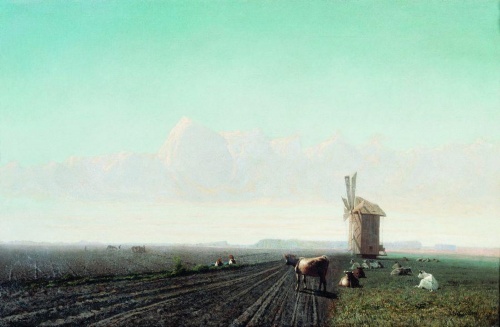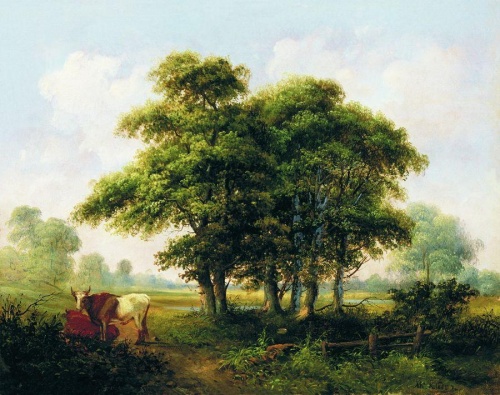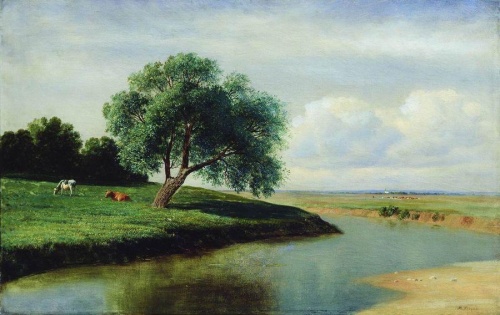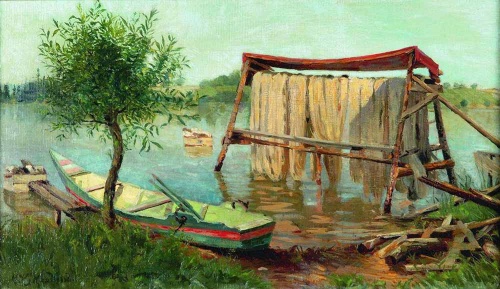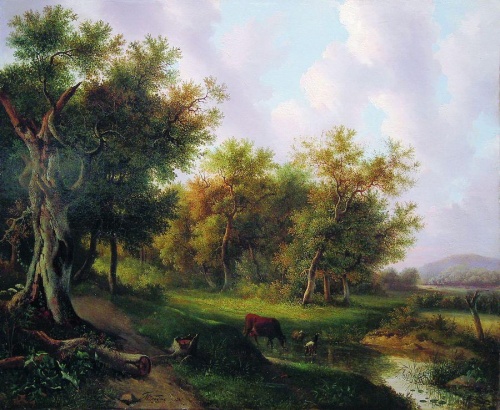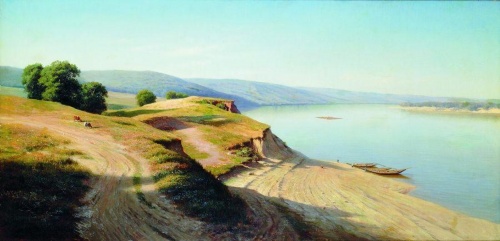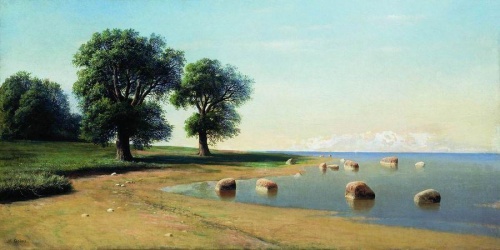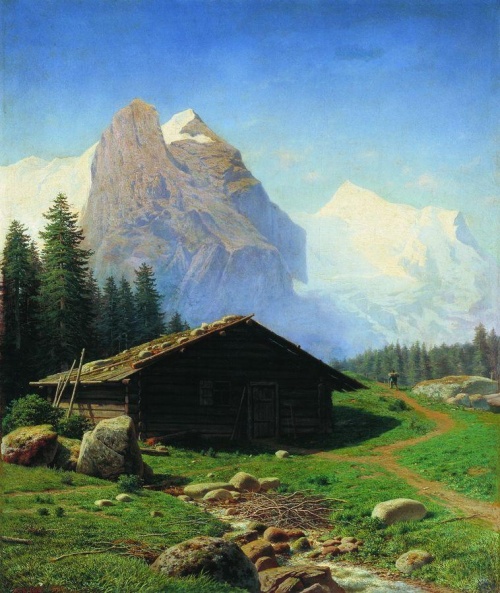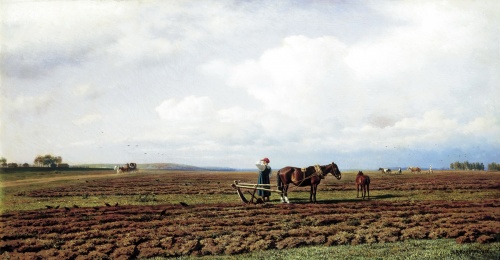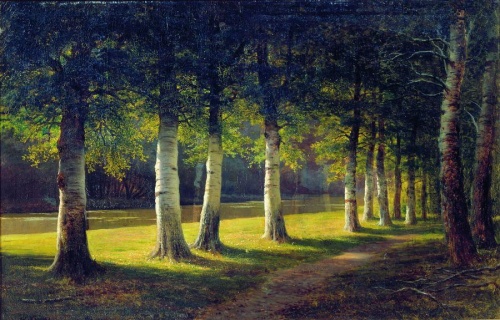Russian artists - Mikhail Konstantinovich Klodt (64 works)
Разрешение картинок от 600x412px до 8000x5244px
Biography
Mikhail Konstantinovich Klodt was born in St. Petersburg on January 11, 1833 into an artistically gifted family. His father, Konstantin Karlovich Klodt, an artillery general, was fond of wood engraving; uncle, Pyotr Karlovich Klodt, was one of the best sculptors. In early childhood, Mikhail Konstantinovich was unsociable. Initially, he studied drawing at the Mountain Cadet Corps with Ivan Trofimovich Khrutsky, who revealed his talent as an artist.
He studied at the St. Petersburg Academy of Arts (1851-1858). He completed his studies at the Academy in the class of landscape painter M. N. Vorobyov, received a gold medal of the second degree for the painting “View on the Island of Valaam” and a gold medal of the first degree for the painting “View of the Zagezal estate near Riga.” For these services he was sent to Switzerland and France as a pensioner for three years. A year later, Klodt asked permission to return. Having received official permission from the Academy in January 1861, he returned to Russia. In the same year, he received the title of academician for the paintings “Night View in Normandy” and “View in the Valley of the Aa River,” written based on foreign impressions, and went on a trip to Russia.
In the spring of 1862, his wedding took place with Elizaveta Gavrilovna Vladimirtsova. From 1860 to 1870, he traveled a lot around the country to study his native nature, working hard and fruitfully. In 1867, two years after the death of Elizaveta Gavrilovna, Klodt married a second time.
In 1870, Klodt became a founding member of the Association of Traveling Exhibitions. Works as a professor at the Academy of Arts (1873-1886). In 1879, Klodt left the Association of Itinerants as a result of a conflict with Kuindzhi. After this event, the artist’s creativity gradually began to decline, including due to developing eye disease. Almost nothing is known about the last years of his life.
Mikhail Konstantinovich Klodt died on May 16 (29), 1902.
Creation
Klodt's works are characterized by scrupulous realism of the image, impeccable drawing with careful elaboration of details, excellent mastery of perspective solutions, rigor and harmony of composition, and the ability to “animate” nature with the presence of man. As for his early work, after his trip abroad, Klodt wrote several works based on these impressions (“Longboats on the shore at low tide. Brittany”, “View in the valley of the Aa River in Livonia” and “Night view in Normandy. Fishermen”. After Mikhail Konstantinovich never again turned to foreign themes in his work.Starting from 1863, absolutely all of the artist’s canvases were dedicated to Russian nature.
In general, Klodt is rightfully considered a subtle master of lyrical landscape. His works are distinguished by incredible care in execution, which in some cases led the artist to naturalism (“Cows”). In the 1860s, Klodt, working in the Oryol, Tula and Smolensk provinces, created the landscapes “Big Road in Autumn” (1863), “Oak Grove” (1863), “View in the Oryol Governorate” (1864), “Russian Village”, “ Alley in a birch grove" (1867), "Rays of the sun", "Sunset in the Oryol province" (1867). But Klodt created his best works in the 1870s. These generally include “Cows” (1870), “On the Plowed Field” (1872), “Forest Distance at Noon” (1873), “Noon” (1870).
The painting “On the Plowed Field” occupied a central place in the artist’s work, becoming an example of the Russian epic landscape of the early 1870s.
According to V.V. Stasov, Klodt established himself in art as a “painter of poetic rural moods.”
